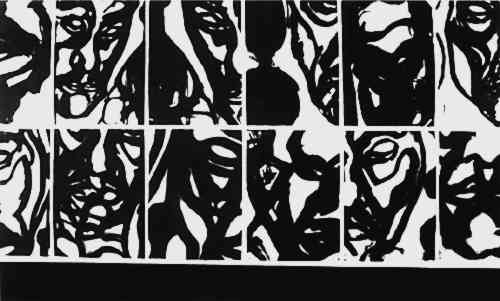BEYOND THE MATERIAL: IDEA, CONCEPT, PROCESS, AND THEIR FUNCTION IN THE CONSERVATION OF THE CONCEPTUAL ART OF MIKE PARRROBYN SLOGGETT
1 INTRODUCTIONThis article developed from a series of conversations between an artist and a conservator that began informally and developed into structured, recorded interviews. For the past three decades Mike Parr (b. 1945) has been one of Australia's foremost proponents of conceptual art. Parr was artist-in-residence at the University of Melbourne in 1991 when the initial conversations took place. Since then he has made himself available to discuss and clarify some of the points raised in these original interviews. The process has been both fascinating and rewarding.
Albano (1996, 183) observes: “We, as conservation professionals, have in many ways begun to isolate the artist from our work.” He explains why, in the pursuit of permanence, conservators have tended to take a partisan view of history, and he proposes that artists' “willingness to accept such changes [to the Dykstra (1996, 212) levels other concerns: “Published discussions of artist's intentions frequently address the nature of creativity and artists' interaction with media. The bearing of history on the interpretation of artworks is also an occasional consideration in discussion of artist's intent, but the role of media and the role of historical context are seldom correlated with it.” Working closely with an artist in order to identify issues of particular importance to that artist and being willing to advocate for the artist's position are actions most conservators would support. However, the cautions raised by Albano and Dykstra remind us that as a profession we may rely on paradigms that limit our ability to take these actions. Identification and assessment of such paradigms are important professional activities. Conceptual art raises challenging issues for materials conservation practice and theory. This should come as no surprise. The raison d'�tre of most conceptual art challenges the hegemony of the art gallery and museum and the structures of the commercial art market—all familiar environments for conservators. The preservation of material has engaged most professional activity and been the major research focus for conservators. The preservation of ideas, per se, is not, ostensibly, the primary concern of the conservator, and the interpretation of the intellectual and historical components of an artwork has usually been considered the domain of the curator, education officer, or exhibitions staff. The issues raised by the conservation of conceptual art, however, highlight the function of interpretation as a relevant and necessary professional activity for conservators. Treatment of other categories of contemporary art and of indigenous material also requires excellent interpretation skills over and above excellent hands-on skills. In these cases, issues of context and use, not condition, set parameters for the meaning for the object. An item of sacred significance is no less significant because it is no longer in good condition. The study of context—art historical or iconographic context, materials analysis context, display context, or an intellectual and philosophical context—is an essential preliminary step in all conservation treatment. Without an understanding of context, inappropriate intervention is a real danger. In the case of indigenous sacred or secret material, even inappropriate viewing can destroy the value of the object. Conservators rely on context to provide authority: When treating an archaeological object, it is not appropriate to clean off food remnants; when treating a painting, the removal of food detritus is likely to be a priority. And conservators rely on authority to justify a particular course of action. There is little point in analyzing the paper of a Parr drawing to determine an appropriate treatment for discoloration if the deterioration implied by the discoloration is the main point of the work. As Ainsworth and Coddington (1995, 16) point out: “Giving priority to any one of these contexts yields a different restoration outcome thereby altering the source of the inquiry, that is the object, itself.” For however much we work to maintain objectivity in the conservation process, “restoration makes plain a set of values, whether formal or cultural” (17). It is critical that in enlisting a set of values we recognize as appropriate (e.g., using low light levels for displaying works on paper, or removing sticky tape and replacing it with an archivally sound material) we do not override values that the artist considers important. Yet
Davenport (1995, 51) notes: “We must construct a methodology for conservation of contemporary art that can take this need for an individual approach into account, yet at the same time offer some guidelines. Such guidelines would apply to everyone involved with this sort of work…. The importance of the artist's intent, or the requirements to accurately convey the scope of the idea for a particular work must be kept in the foreground.” The following study of the work of an individual artist can serve as a focus for the examination of wider issues and assist with the development of such guidelines. |
